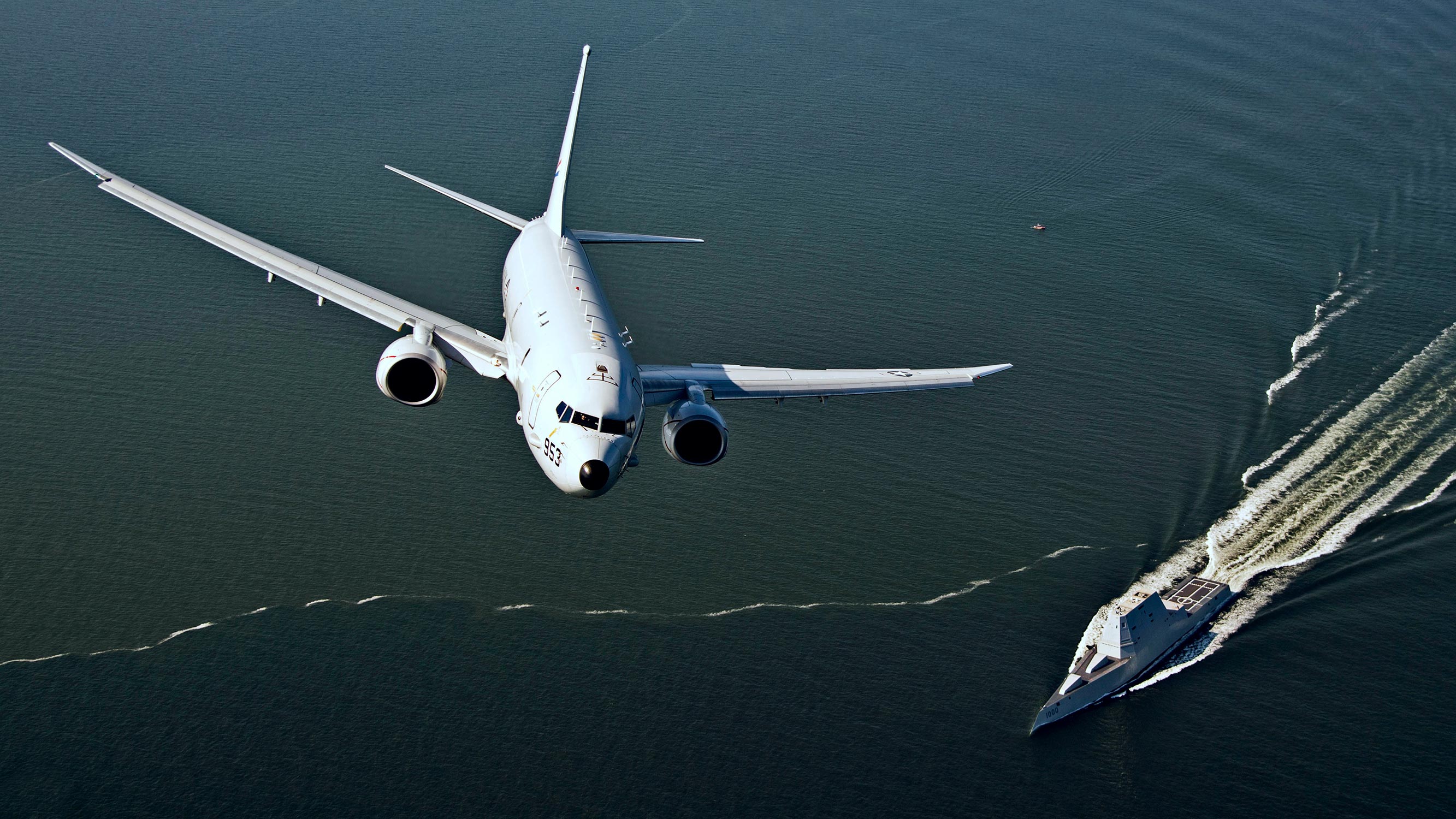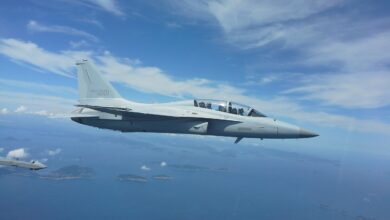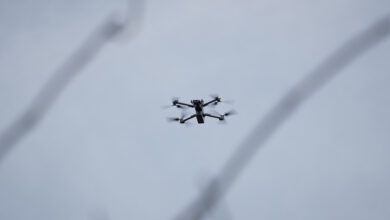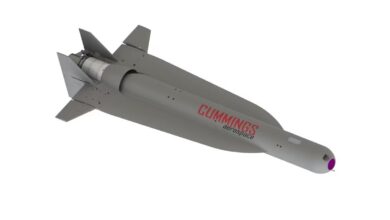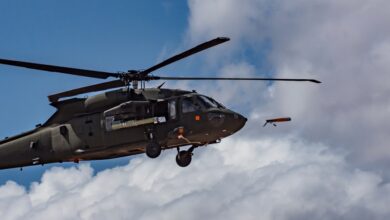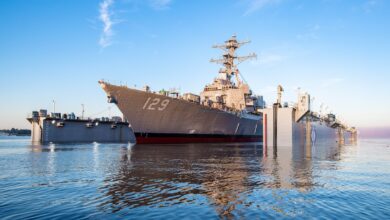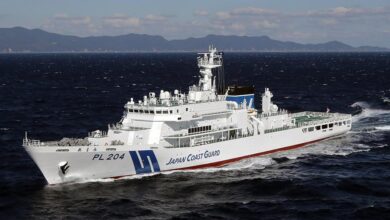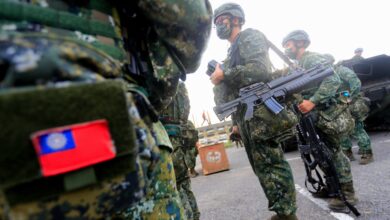As US Navy orders more P-8A Poseidon surveillance planes, Orion squadron flies final mission
New patrol craft will work closely with MQ-4C Triton drones
The U.S. Navy is phasing out a long-time patrol aircraft in favor of its successor. The Navy placed a new order for the Boeing P-8A Poseidon long-range maritime patrol aircraft this month and is set to replace the P-3C Orion, which is slowly being phased out of service.
The change is about more than swapping propellers for jet engines. The P-8A is designed to be better integrated with the Northrop Grumman MQ-4C Triton – an unmanned aerial system ideal for maritime surveillance.
Last week Iranian air defense forces shot down a version of the RQ-4 Global Hawk – the Triton’s predecessor – that was outfitted with Triton technology, and U.S. Central Command later confirmed a Poseidon was nearby after a Islamic Revolutionary Guard Corps commander said the plane and its crew were spared.
Long considered an important part of America’s anti-submarine warfare capabilities and often tasked with other maritime missions, the P-3C Orion has proved durable throughout decades of service.

The Orion has been in U.S. Navy service since the Vietnam War and played a key role in several conflicts in the Indo-Pacific. American and Australian P-3Cs flew several intelligence missions in support of Filipino forces in the 2017 battle of Marawi – an extended anti-Islamic State operation in the southern Philippines.
However, the last squadron of P-3C Orion patrol planes are on their final mission. A wing of the venerable craft is currently on a sixth-month rotation between Bahrain and Japan in what may well be their last mission, according to the Pentagon. Patrol Squadron Zero Four began the mission in April.
The P-3C and its propeller engines are being phased out in favor of the jet-powered Boeing P-8. The P-8 was first introduced to Navy service in 2013 and is essentially a militarized version of the civilian Boeing 737-800 airliner. However, unlike the civilian version of the aircraft, the Boeing P-8 is all business – it can carry weapons and electronic intelligence, surveillance, reconnaissance and early warning systems.
Notably the Poisedon can deploy a range of weapons, including torpedoes, mines, and Harpoon anti-ship missiles. These weapons and the plane’s electronic surveillance capabilities can be used in conjunction with the Triton drones.
The U.S. Navy plans to purchase an additional 21 Poseidons (in addition to some 117 prior orders, including 10 ordered in January). Foreign buyers are set to buy a similar number according to Reuters, which has reported that Boeing produces 1.5 of the aircraft per month.
The American-made warplane is also operated by Australia and India, while the United Kingdom, Norway, South Korea and New Zealand all have outstanding orders. New Zealand outlined its plans for the aircraft in a policy document this month.
Canada and Singapore may be considering purchasing the P-8 plane as well.
Australia, which has issued purchase orders for the Global Hawk, may pair the two systems as the U.S. Navy has already done, although the first Triton will not be in Australian service until 2023. India, another operator of the P-8, is also considering a purchase of the Triton UAV.

Japan, another operator of the propeller-engined P-3, has developed and deployed their own jet-engined patrol plane, the Kawasaki P-1, rather than purchase the new Boeing-built aircraft. The P-1 is one of only a handful of Japanese weapons systems that have been marketed for export.
For Japan, such aircraft play an important role in keeping China’s emerging submarine threat in check. The Indo-Pacific is home to more submarines than any other waters in the world.
“There are 400 foreign submarines in the world, of which roughly 75% reside in the Indo-Pacific region,” said U.S. Navy Admiral Philip Davidson in a March appearance before the U.S. Congress. “One-hundred and sixty of these submarines belong to China, Russia and North Korea.”
In particular, China’s submarine fleet is expanding rapidly and may soon be able to deploy ballistic nuclear missiles. At present China is believed to operates four nuclear-powered ballistic missile submarines, six nuclear-powered attack submarines and 50 conventional attack submarines.
However, both the Orion and Poseidon can fly a variety of other missions, including command and control, intelligence gathering and surveillance.

While the last Orions will be fully phased out of U.S. service by 2023, the plane continues to be operated by several countries around the globe.
The role of the P-3 Orion during the battle of Marawi left an impression in the Philippines, and the Filipino military is keen to acquire several of the P-3Cs if the United States is willing to sell them with their advanced surveillance capability.
“It will be good if we acquire even one P-3 Orion, provided it has all its original equipment. Otherwise, it will just be another transport plane. We will find out if we can get one or two,” Philippines Defense Secretary Delfin N. Lorenzana said in May.
Japan looks to boost naval capabilities in face of emerging China submarine threat

